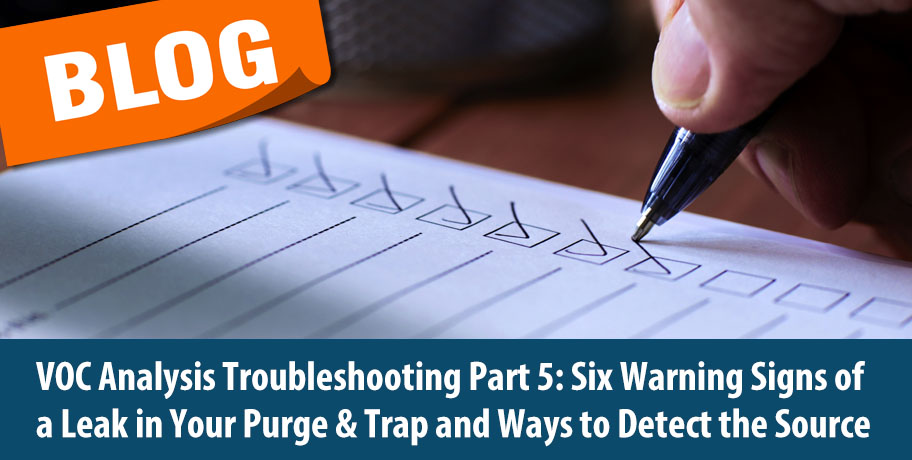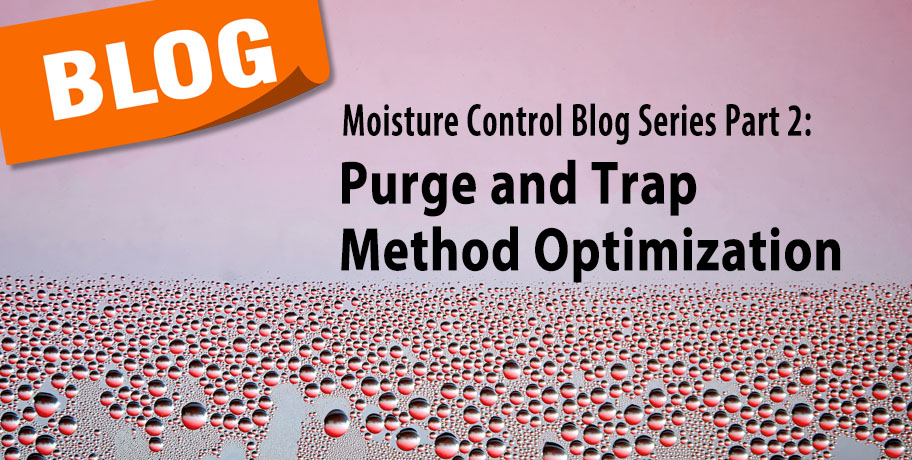Has your laboratory been having issues obtaining helium for your environmental analysis? As helium supplies become scarcer and more expensive, you may have been seeking alternative carrier gases or ways to conserve helium without sacrificing system performance. This blog will explore ways to conserve helium during your purge and trap (P&T) analysis.
Amy Nutter
Recent Posts
Tags: helium, VOC, Teledyne Tekmar, P&T, Purge and Trap
Troubleshooting Part 6: Benchmark Troubleshooting Tool
Posted by Amy Nutter on Fri, Oct 20, 2023 @ 01:18 PM
In this last installment of our volatile organic compound (VOC) analysis troubleshooting series, the benchmark test will be covered. This benchmark test is available in the Teledyne Tekmar TekLink software tools menu. The tool allows for full electromechanical testing, including valving, heaters, vial handling systems, liquid delivery system, inputs and outputs.
Tags: VOC, Teledyne Tekmar, Volatile Organic Compounds, Purge and Trap
Troubleshooting Part 5: Six warning signs of a leak in your Purge & Trap and ways to detect the source
Posted by Amy Nutter on Wed, Sep 06, 2023 @ 04:07 PM
Throughout this troubleshooting series, in nearly every topic discussed, the answer led to performing a leak check on the Purge and Trap (P&T). This part of the series will go over the preventative maintenance program and understanding the leak check troubleshooting tool in Teklink, the Teledyne Tekmar P&T software.
Tags: VOC, P&T, Purge and Trap, Atomx XYZ
Troubleshooting Part 4: Linearity and reproducibility issues
Posted by Amy Nutter on Fri, Aug 11, 2023 @ 11:12 AM
This is the forth in our Troubleshooting series for VOC Analysis.
- Part one is linked here, VOC Analysis Troubleshooting Part 1: How to Begin Troubleshooting
- Part two is linked here, Troubleshooting Part 2: No or low analyte response and carryover
- Part three is linked here: Elusion Issues and Moisture Control
Troubleshooting linearity and reproducibility issues in your systems can be difficult. Problems with linearity and reproducibility can make calibrating your systems frustrating, and if internal standards are varying, it can cause all other target compound to look unstable.
Tags: VOC, P&T, Purge and Trap
Troubleshooting Part 3: Elution issues and moisture control
Posted by Amy Nutter on Fri, Jul 28, 2023 @ 01:33 PM
This is the third in our Troubleshooting series for VOC Analysis.
- Part one is linked here, VOC Analysis Troubleshooting Part 1: How to Begin Troubleshooting
- Part two is linked here, Troubleshooting Part 2: No or low analyte response and carryover
Part three will discuss elusion issues and moisture control for VOC analysis.
Tags: VOC, Teledyne Tekmar, Volatile Organic Compounds, P&T, Purge and Trap, Moisture Control
Troubleshooting Part 2: No or low analyte response and carryover
Posted by Amy Nutter on Fri, Jun 09, 2023 @ 03:34 PM
This is the second in our Troubleshooting series for VOC Analysis.
Part one is linked here, VOC Analysis Troubleshooting Part 1: How to Begin Troubleshooting
Part 2 will discuss No, or Low, Analyte Response and Carryover.
Troubleshooting your instruments can be a frustrating process, but I hope this series eases some of that pain and helps you through it. If you’re dealing with no or low response from your analytes, you first need to know if the analytes are even getting to the Gas Chromatograph and Mass Spectrometer (GC-MS). Following the advice in part one of this series, start with a direct injection into the GC of the same standards you use on your Purge and Trap (P&T), to confirm normal operation of the GC-MS. If you see poor chromatography and resolution or reduced response, you should change your inlet liner and clip the column.
Tags: VOC, Purge and Trap
VOC Analysis Troubleshooting Part 1: How to Begin Troubleshooting
Posted by Amy Nutter on Fri, Jun 02, 2023 @ 10:21 AM
A carefully designed and faithfully executed preventative maintenance program is the best method for maintaining your scientific instruments. Keeping up with daily, weekly, monthly, and even quarterly maintenance tasks will help maintain the performance of the unit and decrease downtime. Maintenance checklists can be found in the manual to your Teledyne Tekmar instrument. The manual can also be an immense help with troubleshooting, because it has tips and instrument flow diagrams.
Tags: VOC
Moisture Control Blog Series Part 4: Ways to optimize moisture control in the GC-MS
Posted by Amy Nutter on Mon, Apr 10, 2023 @ 02:38 PM
Water vapor entering the gas chromatograph (GC) inlet, column, and, ultimately, the mass spectrometer (MS) can minimize the sensitivity of our early eluting compounds, including our gases. It can also cause poor peak shape, compounds to co-elude, and shift in retention time, even in compounds outside of the water peak. So, once the water is introduced into our system, it starts to wreak havoc on all our compounds. Some say water doesn’t affect column phase or lifespan, but some have seen an effect, especially if you’re running a lot of samples; water can shorten the column life of your GC column and can cause vacuum issues if you’re using a MS system, which could lead to shorter filament lifetime and having to clean the source more often.
Throughout this blog series, we’ve discussed ways to minimize the amount of water vapor introduced to the GC-MS, using Teledyne Tekmar’s moisture control fitting and application control. We can continue to control moisture not only through this hardware designed for the Purge and Trap, but also through method parameters we can adjust and using smart method parameters on the GC.
Tags: VOC, Purge and Trap, Moisture Control
Moisture Control Blog Series Part 3: Ways to optimize moisture control in the Purge and Trap – desorb and bake settings
Posted by Amy Nutter on Mon, Apr 03, 2023 @ 12:35 PM
The last two Purge and Trap (P&T) settings we will discuss in this blog series might be the most important for moisture control in this volatile organic compound (VOC) analysis: desorb and bake settings.
We can adjust our desorb time to help reduce the amount of moisture we put onto the gas chromatograph (GC) and mass spectrometer (MS). A longer desorb time will remove more of compounds from the analytical trap and send them to the GC, but this includes water, leading to a longer water peak in the total ion chromatogram. If the desorb time is shortened, less of that analyte material is transferred to the GC, but we will have a much shorter water peak, giving the compound peaks better shape and resolution. This gives us an opportunity for method optimization with the desorb settings both in time and temperature.
Tags: VOC, Purge and Trap
Moisture Control Blog Series Part 2: Ways to optimize moisture control in the Purge and Trap
Posted by Amy Nutter on Mon, Mar 06, 2023 @ 10:49 AM
In part one of this series, we learned why water vapor is bad for volatile organic compound (VOC) analysis. In part two, we will explore ways we can optimize moisture control in the Purge and Trap (P&T) system.
Tags: VOC, application chemist, Purge and Trap, Moisture Control









